- Home
- Edward Lee
Buttermilk Graffiti
Buttermilk Graffiti Read online
Edward Lee
buttermilk graffiti
a chef’s journey to discover america’s new melting-pot cuisine
ARTISAN | NEW YORK
These are the blazing days and you are asked to love
—Rebecca Gayle Howell, from “A Calendar of Blazing Days”
TO DIANNE, who is my strength, my heartbeat, my magic
TO ARDEN, who whispers to me the best stories ever
And to anyone who has ever crossed an ocean to plant a seed
Contents
Introduction
Chapter 1
Pilgrimage for a Beignet
Korean Doughnuts
Green Tea Beignets
Chapter 2
The Pugilist and the Cook
Amok Trey
Pork Lab with Fried Egg on Popcorn Bread
Chapter 3
The Unfamiliar Noodle
Lagman Soup
Russian Pickled Watermelon
Coffee-Glazed Bacon with Pickled Watermelon and Fried Peanuts
Chapter 4
The Accidental Fast
Lamb Arayes with Tahini Dressing and Pickled Sweet Peppers
Chanterelle Hummus
Chapter 5
Exile and Cigars
Mango Fries with Jalapeño-Mint Aioli
Chicken “Vaca Frita” with Coconut Rice and Mojo Sauce
Chapter 6
Slaw Dogs and Pepperoni Rolls
My Version of a Slaw Dog
Fried Pork Chops with Miso Creamed Corn and Pickle Juice Gravy
Chapter 7
A Kibbeh in Clarksdale
Cabbage Rolls with Nasturtium Leaf Kimchi
Beef Tartare–stuffed Deviled Eggs with Caviar
Chapter 8
Matriarchs of Montgomery
Octopus Stir-Fry
Salt-Roasted Sweet Potatoes with Kalbi Butter and Gochujang Sauce
Chapter 9
A Lesson in Smen
Baked Clams with Saffron and Bourbon-Washed Butter
Seared Beef Rib-Eye with Prunes, Almonds, and Bourbon-washed Butter
Chapter 10
Death and Aquavit
Budae Jjigae with Fried Bologna
Pickled Salmon
Pickled Salmon with Strawberries, Dill, and Horseradish Cream on Savory Pancakes
Chapter 11
Trawling for Shrimp
Vietnamese Crepes with Shrimp, Pork, and Herbs
Bourbon Nuoc Cham–Roasted Oysters
Chapter 12
The Immortality of Paterson
Pollo a la Brasa
Green Fried Rice with Chicken, Cilantro, and Ají Sauce
Chapter 13
Nigerian Hustle
Beef Skewers with Cashews, Curry, and Black Pepper
Spicy Tomato-Braised Chicken with Turmeric and Cashew
Chapter 14
German Mustard
Hasenpfeffer
Roast Butternut Squash Schnitzel with Squash Kraut in a Mustard Cream Sauce
Chapter 15
The Palace of Pastrami
Beef Tongue Pastrami
Beef Tongue Sandwich on Everything-Spice Sally Lunn Bread
Beef Tongue on Johnnycakes with Thousand Island Dressing
Chapter 16
A Tale of Two Cornbreads
Lacy Cornbread with Rhubarb Jam
Epilogue
Acknowledgments
About the Author
Introduction
One of the most fascinating cookbooks I own is a small spiral-bound booklet called Favorite Southern Recipes, published in 1937 in Lexington, Virginia. It is a collection of recipes with no introduction or headings; no author’s name is given. The recipes appear in paragraph form, are sparsely worded, and are written in a mechanical tone that assumes the reader has a working knowledge of the kitchen. The booklet includes recipes for everything from Crumb Pudding to Welsh Rabbit to an odd but delicious breakfast dish of eggs poached in milk. At the bottom of the table of contents is a sentence that reads, “Some of the recipes in this book were copied from Mrs. Robert E. Lee’s book of recipes in her own handwriting.”
Though I don’t doubt that Mary Anna Custis Lee was a competent cook, I’m also pretty sure she had a good deal of help in her kitchen. Favorite Southern Recipes, having been produced after her death, does not give credit to anyone else. The only indication of who might have been responsible for the recipes is the small black-and-white cover photo depicting an elderly African American woman in a servant’s outfit: a dark collared shirt, white waist apron, and mobcap. She is standing stiffly in front of a white picket fence. The look on her face is empty, haunting. She is not smiling. Nowhere in the booklet is it explained who she was or why she is on the cover.
I’ve thought a lot about this nameless woman. I’ve thought about the stories she could have told us. What if the cookbook had been written in her voice? What if she had been allowed to tell her story through the recipes that were most likely her inventions? It would have made this booklet more than just a collection of recipes; it would have given us a rare window into the life of a slave. Sometimes, when I read the recipes, I get a glimpse of what her life might have been like. When a recipe for corn pone tells me to mix water-ground cornmeal and cold water into a mixture that can be worked through the fingers, I see her hands working the batter, not the hands of Mary Anna Custis Lee. I hear her voice telling me to fry the oblong bits of corn pone—she would have been too busy to bother with measurements—a little at a time in a skillet with hot oil or lard. I see pots of collard greens and okra tomato stew simmering on the stovetop. I imagine pies cooling in a cupboard and pickles being preserved in jars. I wonder if she had children, and if they helped her in the kitchen. I see her imagined life, both tragic and uplifting, told through nuggets of the corn pone as they fry in the skillet.
Today’s cookbooks are much different from that slim booklet from the past. They not only give the name of the author but tend to focus on his or her narrative. This says a lot about who we are as a culture now; we care about the person behind the recipes. For us, it is important to know as much about the cook as we do about his or her dishes. Cookbooks are living traditions. They reflect back to us who we are, as individuals, as a culture. It was the French gastronome Jean Anthelme Brillat-Savarin who first wrote, “Tell me what you eat and I shall tell you what you are.” I can modify that to fit our modern times: show me your recipes and I can tell you who you are.
When I wrote my first cookbook, Smoke & Pickles, back in 2013, I reflected on this idea a lot. It was a two-year process, writing that book. To research it, I read hundreds of cookbooks—everything from Apicius to Mrs. Beeton’s Book of Household Management to Edna Lewis’s The Taste of Country Cooking. For that book, I wanted to create recipes for the home cook, but I also knew I had to tell the story of how I had gone from being the child of Korean immigrants in Brooklyn to a Southern chef in Kentucky. It’s an unconventional story, and I knew it would be an important one to explain why I cooked the food I cooked. You see, I would not be the chef I am today without the influence of both my heritages: my Korean childhood in Brooklyn and the traditions of Southern food I’ve learned to love. Because my life has been an improbable journey from Canarsie to Kentucky, an unlikely coupling of Korean and Southern cuisine, I am fascinated by other unlikely couplings that make up the narrative of life in America.
The title of this book, Buttermilk Graffiti, is poetic shorthand for my life. Buttermilk is the iconic ingredient
of the American South, one that I not only learned to cook with but grew to love. Graffiti is the art form that first inspired my identity, the thing that connects me to the memories of my youth in Brooklyn in the 1980s. Each word by itself is important but one-dimensional. When they come together, though, they become the full story of who I am. If my food were just one or the other, it would be fine, but it wouldn’t be as uniquely layered.
While I was on tour for Smoke & Pickles, I visited a lot of places. It was the first time I got to experience this country on a rigorous schedule, visiting city after city, day in and day out. I could be in Milwaukee one day and then New Orleans the next, and with each new town, I saw the culture of America unfolding before my eyes. The experience gave me a perspective I’d never had before. There were many lonely nights spent in airport bars or walking unfamiliar streets, and it was during that tour that the seeds of this book germinated. I ate great food everywhere I went, but more than that, I listened to beautiful, unlikely stories told by people from many walks of life, stories that were not necessarily about food but that helped me put what I was eating into a greater cultural context. I think about the town of Lowell, Massachusetts, and the Cambodian immigrants who are creating a lasting influence on the city’s cultural and culinary landscape. It is a fascinating example of the American dream and a new American cuisine that is cropping up all over small towns everywhere. But that story of Cambodian immigrants is incomplete without the tale of an Irish boxer who fought his way out of the poor tenement housing projects to become a local legend and owner of the best bar in Lowell. On the surface, the two stories have nothing to do with each other; but to me, they are inseparable. They give texture to a time and place in America where we are witnessing one culture give way to another. Just as my life has been an unlikely progression from graffiti to buttermilk, I see the soul of a city like Lowell linked by a boxer and a chef of Cambodian cuisine. The connection may not seem evident at first, but it exists and will forever shape the history of Lowell.
I cannot eat a dish without wondering who cooked it and what her story is. For me, the discovery of a great dish is not the pinnacle; it is just the beginning. The fun part is figuring out how a cook creates a dish, and why. Was she out of the ingredient called for in a recipe and improvised? Did he embellish a dish plucked from a childhood memory? There is always more to the story than the ingredients on the cutting board. These stories, I believe, are the building blocks of a new American cuisine, one taking root all over the country.
I love food made by immigrants. Not only is it delicious, but it often has all the elements I look for in a recipe: simplicity, resourcefulness, frugality. More important to me, though: it is often made by those whose voices have been overlooked. I’ve met a lot of immigrants along my journey through the food world, and they all had a story to tell. Some were new to this country; some could trace their American lineage back hundreds of years. All of them, however, have contributed to the evolving story of American cuisine.
This book is the story of American food. It is a recollection of people and places that help paint an image of where we came from and where we’re heading. So much of what we think of as “traditional” American cuisine is being challenged. We are witnessing a reshaping of the food landscape, and it is thrilling to some, obscene to others. And that is when it becomes interesting to me—when that tension between two vastly different cultures creates something new.
The story of American food is one of transformation. Any international cuisine changes once it lands on the shores of America. I am reminded of my own family’s journey to the United States from South Korea and how important it was for my parents to protect their culinary identity in a world that was foreign and often bewildering. But they also had to improvise with unfamiliar ingredients that were readily available to them: tomatoes, eggplants, and new varieties of cabbage and spices. I’m fascinated by this raw instinct to preserve. I’m less interested in what my parents’ food looked like back in the mother country than I am in what happened to it once they’d brought it to Brooklyn and it had to coexist with that of other cultures, when their kimchi had to be made with Jamaican chili powder instead of Korean chile flakes.
The intersection of food and culture happens in strange and beautiful ways. In the book, I travel to places such as Clarksdale, Mississippi, where I meet a pair of Lebanese sisters who sell wigs and make cabbage rolls, and a nightclub owner who sells contraband whiskey. I would never have thought that these two worlds could collide, but in this Mississippi Delta town, they do.
In Paterson, New Jersey, I learn about the multilayered melting pot of Peruvian food while chasing the ghosts of retired soccer players. In Montgomery, Alabama, I challenge a pair of sisters who run a soul food restaurant to a Korean food–eating challenge.
The words authenticity and tradition are bandied about a lot in the food world. Authenticity, which we often use when defending our narrow culinary views, can be a hindrance, a means of exclusion, a distortion of history. Whenever a cookbook exhibits the tagline “Authentic recipes from the American South,” I always ask myself, What South are you talking about? Pre-colonial South? Plantation South? Post-colonial? Post–civil rights movement? Paula Deen’s South? The immigrant South? All are part of the complicated history of the South. None can claim a true authenticity. Authenticity is a word I rarely use, and one I never give credence to. Tradition, though, is used to describe nostalgia. It is a sister to authenticity, and yet wholly different. We are nothing without our traditions. Our identities are formed from them. I have never been conflicted about the beauty of the traditions my family follows. I still eat Korean rice cake soup on New Year’s Day, as was the tradition in my house when I was growing up, and I also love Thanksgiving dinner with all the trimmings. I cherish the importance of passing along both these rituals to my daughter.
The danger with tradition is when it is given authority, when it demands “authenticity.” Words such as true, genuine, and real will then quickly enter the discussion. These words reek of a sanctimoniousness I’ve never thought belonged in the food community. My kimchi bologna sandwich is just as tasty as your mortadella muffuletta, and your tofu cacciatore is just as good as your mother-in-law’s version from Tuscany. In the short but incredibly rich history of American food, we are all writing our own encyclopedia entries. Yes, we naturally gravitate toward what is popular, what dominates culture, but I want to fill the voids in between. I want to help tell the stories that have rarely been told.
One untold story from my childhood is not about food but it shaped me as a person and, eventually, as a chef. It is about a forgotten graffiti artist named Smith, who eluded the law for a decade in New York City. He started out as part of a duo with his brother, David Smith, who went by Sane. Together, they were Sane Smith. The two were ubiquitous in New York City in the 1980s. Before there was Banksy or Shepard Fairey, there was Sane Smith. The brothers covered the city like a plague. At first, they were unspectacular, just two writers among thousands of derelict kids throwing up paint on the city’s walls. But these two were competitive with each other. What started out as a hobby soon became an arms race between the brothers. Sane became more artistic and complicated in his tags, while Smith turned his “art” into a relentless mission to tag his name on every surface across the five boroughs. Rumors began to swirl that Smith was not one person but an army of minions—it seemed impossible that he could be in so many places at once. The average New Yorker on his way to work probably did not notice Smith tagged up on every corner of the city, but the tags were everywhere: on park benches, subway tunnels, tenement roofs, scaffolding high above the Brooklyn Bridge. His message was clear: graffiti was never about being the best; it was about dominating in a way that made others throw their Krylons in the air with a sigh of defeat.
As a young, aimless teenager, I followed Smith pretty obsessively, while I tried my hand at tagging. I admired his relentlessness. I wanted him to explain
to me how his world worked. But I never found him. I never ran into him on a cold, damp night, tagging a pristine wall. Sane died in a mysterious subway accident. The city cracked down on graffiti and Smith drifted off into obscurity. I exchanged my own Krylons for a set of kitchen knives. They were the same thing to me. The kitchen was just another place to paint anonymously. After all, throwing up a tag that hid one’s identity was not so very different from being a nameless, faceless line cook pouring sauce onto pretty plates of food in the kitchens of trendy restaurants. And maybe nameless, faceless line cooks are not so different from the nameless maid gracing the cover of that booklet of Southern cooking that sits on my shelf. Yes, she was anonymous, but that does not mean she loved her food any less.
This connection between graffiti artists and that Southern cook brings me all the way back to my present-day life, in Louisville, Kentucky, where I continue to ask myself where I belong in this long, winding narrative of Southern food.
Recipes come to us from all parts of a culture, not just its cuisine. This is why your Polish grandmother’s cabbage rolls are the best—because they come with a story that often has nothing to do with the rolls themselves. Perhaps she got the recipe from her grandmother, so when you make them, you feel a connection going back five generations. It’s why my grandmother’s kalbi jjim recipe reminds me of how she used to darn the holes in my old socks while her stew, slowly braising on the stove, filled the house with a sweet and salty aroma. Ingredients are finite but recipes go on forever. And every recipe is linked to a story. Beneath the surface of any recipe is a complex tale of history and family, of time and place.
Take out a piece of paper and write down your current favorite foods. Maybe you can rattle off five or six. Now close your eyes and remember the dishes you ate long ago, when you were a child. Now think about the foods you love that were introduced to you by your spouse, your friends, your colleagues, or even your travels. The list gets longer. Now go back and attach a story to each one. Perhaps bruschetta reminds you of your first trip to Rome. Or a hot dog reminds you of being with your dad at a baseball stadium.

 In the Year of Our Lord 2202
In the Year of Our Lord 2202 The Minotauress
The Minotauress Terra Insanus
Terra Insanus The Stickmen
The Stickmen Flesh Gothic by Edward Lee
Flesh Gothic by Edward Lee Family Tradition
Family Tradition You Are My Everything
You Are My Everything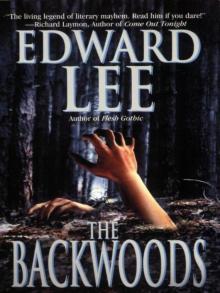 The Backwoods
The Backwoods The Teratologist
The Teratologist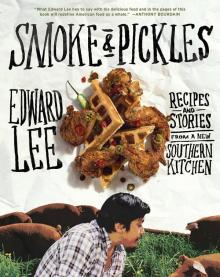 Smoke and Pickles
Smoke and Pickles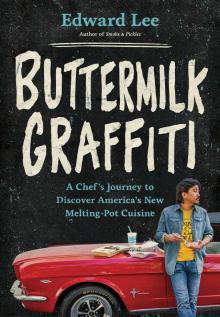 Buttermilk Graffiti
Buttermilk Graffiti Dahmer's Not Dead
Dahmer's Not Dead Quest for Sex, Truth & Reality
Quest for Sex, Truth & Reality The Innswich Horror
The Innswich Horror Brides Of The Impaler
Brides Of The Impaler Goon
Goon Trolley No. 1852
Trolley No. 1852 Sacrifice
Sacrifice Monster Lake
Monster Lake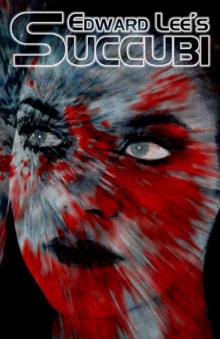 Succubi
Succubi Lucifer's Lottery
Lucifer's Lottery Monstrosity
Monstrosity The House
The House The Dunwich Romance
The Dunwich Romance Operator B
Operator B Bullet Through Your Face (improved format)
Bullet Through Your Face (improved format) Grimoire Diabolique
Grimoire Diabolique Room 415
Room 415 The Messenger (2011 reformat)
The Messenger (2011 reformat) Incubi
Incubi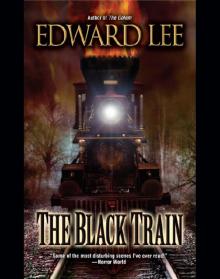 The Black Train
The Black Train House Infernal by Edward Lee
House Infernal by Edward Lee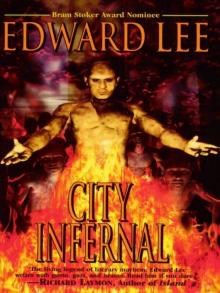 City Infernal
City Infernal Creekers
Creekers The Haunter Of The Threshold
The Haunter Of The Threshold Mangled Meat
Mangled Meat The Doll House
The Doll House Header 2
Header 2 Bullet Through Your Face (reformatted)
Bullet Through Your Face (reformatted) Header 3
Header 3 Infernal Angel
Infernal Angel Pages Torn From a Travel Journal
Pages Torn From a Travel Journal Edward Lee: Selected Stories
Edward Lee: Selected Stories The Bighead
The Bighead The Chosen
The Chosen